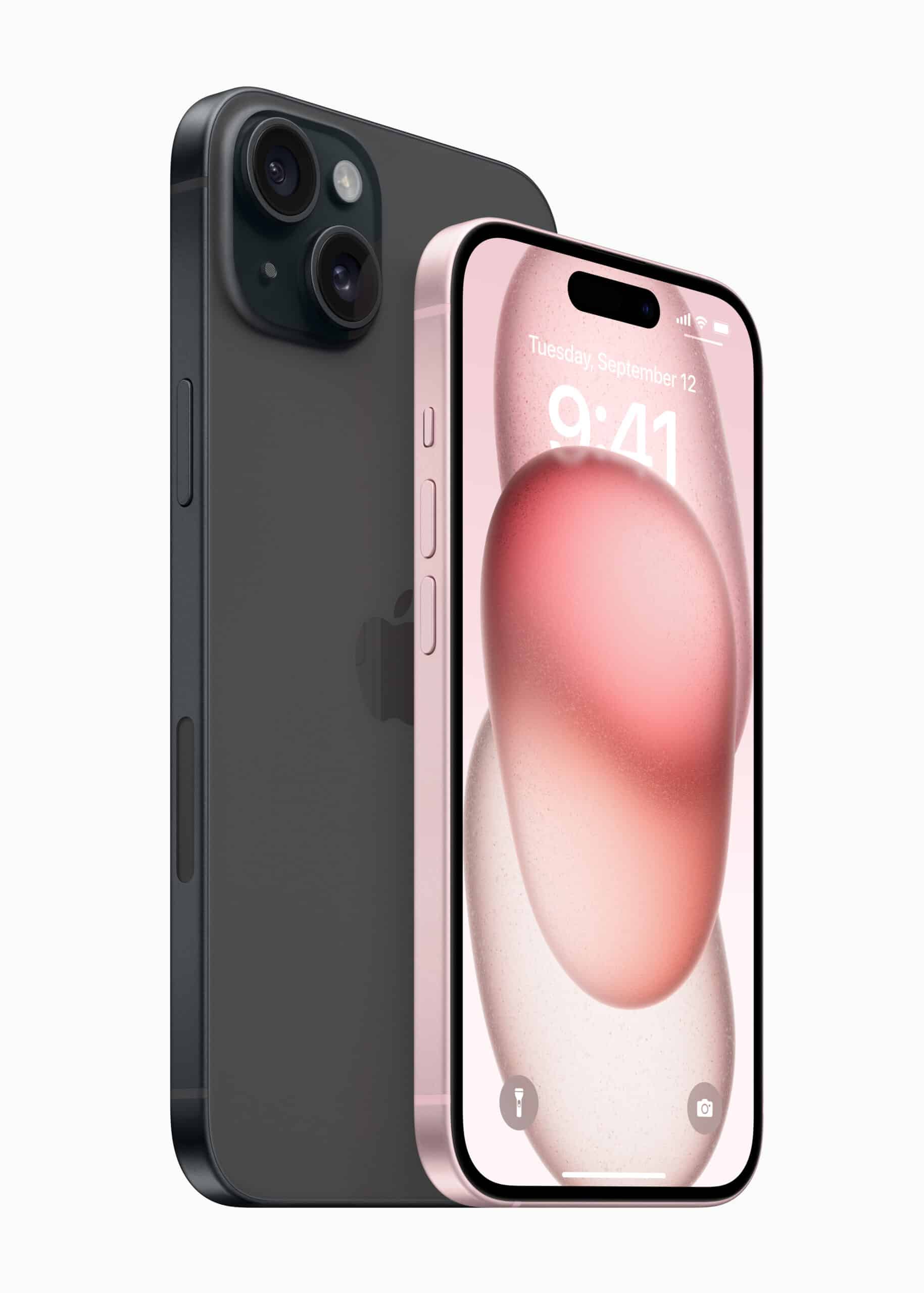
Apple today unveiled the iPhone 15, bringing the company’s mid-tier lineup a new exterior design, display, cameras, and several other features and capabilities introduced on last year’s flagship Pro iPhones.
Oh yeah. There was one other thing you may have heard about: the Lightning port is no more. Apple has removed the Lightning port and replaced it with a USB-C port to handle charging and data transfer on iPhone 15.
In addition to all the features and improvements specific to iPhone 15 below, iPhone 15 will also feature several other new features coming to all other supported iPhones in iOS 17. You can read all about what’s new in iOS 17 right here.
Dynamic Island for all
The most noticeable change to the device is the new display. Last year, Apple introduced a new notch-less display design on the iPhone 14 Pro models that featured a pill-shaped punch-out called the Dynamic Island to house the front-facing camera and FaceID sensors.
With the iPhone 15 models, the Dynamic Island is now available on all new iPhones. Just as it does on the Pro models, Dynamic Island makes use of that pill-shaped negative space in the screen by occasionally accentuating it with alerts and live updates like sports scores or navigation directions. Check out this quick video to see the Dynamic Island in action.
New Pro Display XDR
Beyond the Dynamic Island, the display architecture of the iPhone 15 has been updated as well.
The display remains an OLED Pro Display XDR, but it can now reach peak HDR brightness of 1,600 nits to display more vivid images. And when you venture outside into harsh sunlight, the iPhone 15 display can now reach 2,000 nits, making the phone much easier to read in those bright conditions.
The display also features the latest version of Apple’s Ceramic Shield technology, which Apple claims is the strongest display glass on the market.
New contoured design with strengthened back glass
The external design of the iPhone 15 has been updated as well, with improvements that will improve the feel of the phone in your hand while also making it more resistant to damage.
First up, Apple has updated the iPhone 15’s aluminum enclosure with a new contoured edge design, eliminating the flatter, squared-off edges of the previous generation.
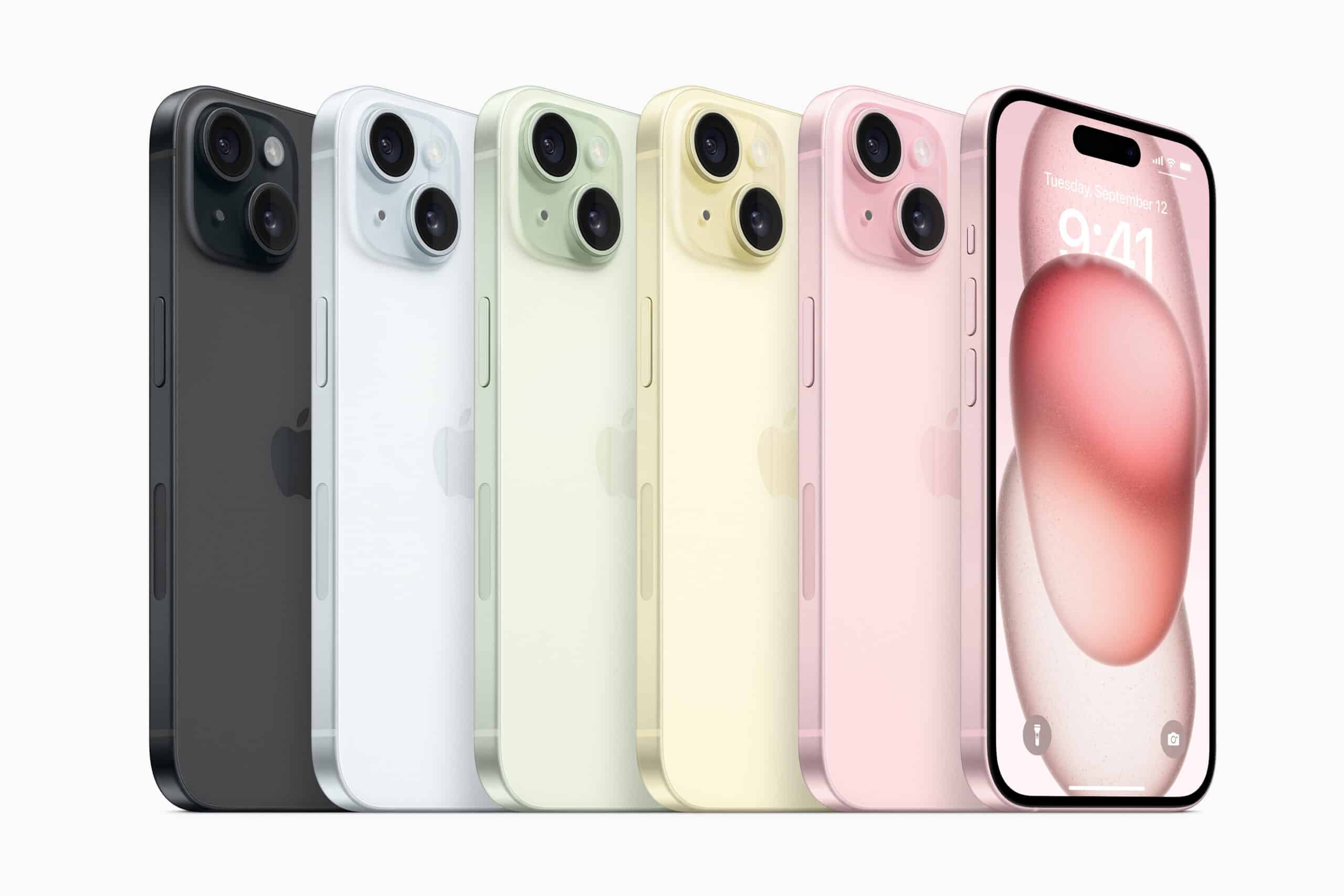
Apple has also made changes to the back glass of the iPhone 15 models. Using a new manufacturing process, the back glass on iPhone 15 is now color-infused and etched to create a textrued matte finish.
This new process process for the back glass has resulted in a very interesting—albeit muted—pastel color palette for the iPhone 15 lineup. Available colors—which you can see above—are pink, yellow, green, blue, and black.
Hello, USB-C
OK. Let’s talk ports.
Another major change coming to the iPhone 15 is the introduction of USB-C. The USB-C port replaces the Lightning port that has been present on all iPhones since the iPhone 5, which launched in 2012.
Functionally, the USB-C port does exactly the same thing that the Lightning port did: it charges your phone and allows you to connect and offload data to another device like a laptop.
The major benefit to this change is that all new Apple devices can now be charged with the same type of cable. (Even though Apple Watch requires its own magnetic puck charger, it does charge via a USB-C connection on the other end. So, the axiom technically still applies.) When you’re packing up for work or travel, or need to connect your phone in the car for CarPlay or charging, you only need to grab USB-C cables.
Plus, now you won’t need a Lightning dongle to connect things like USB-C-based SD card readers to your iPhone.
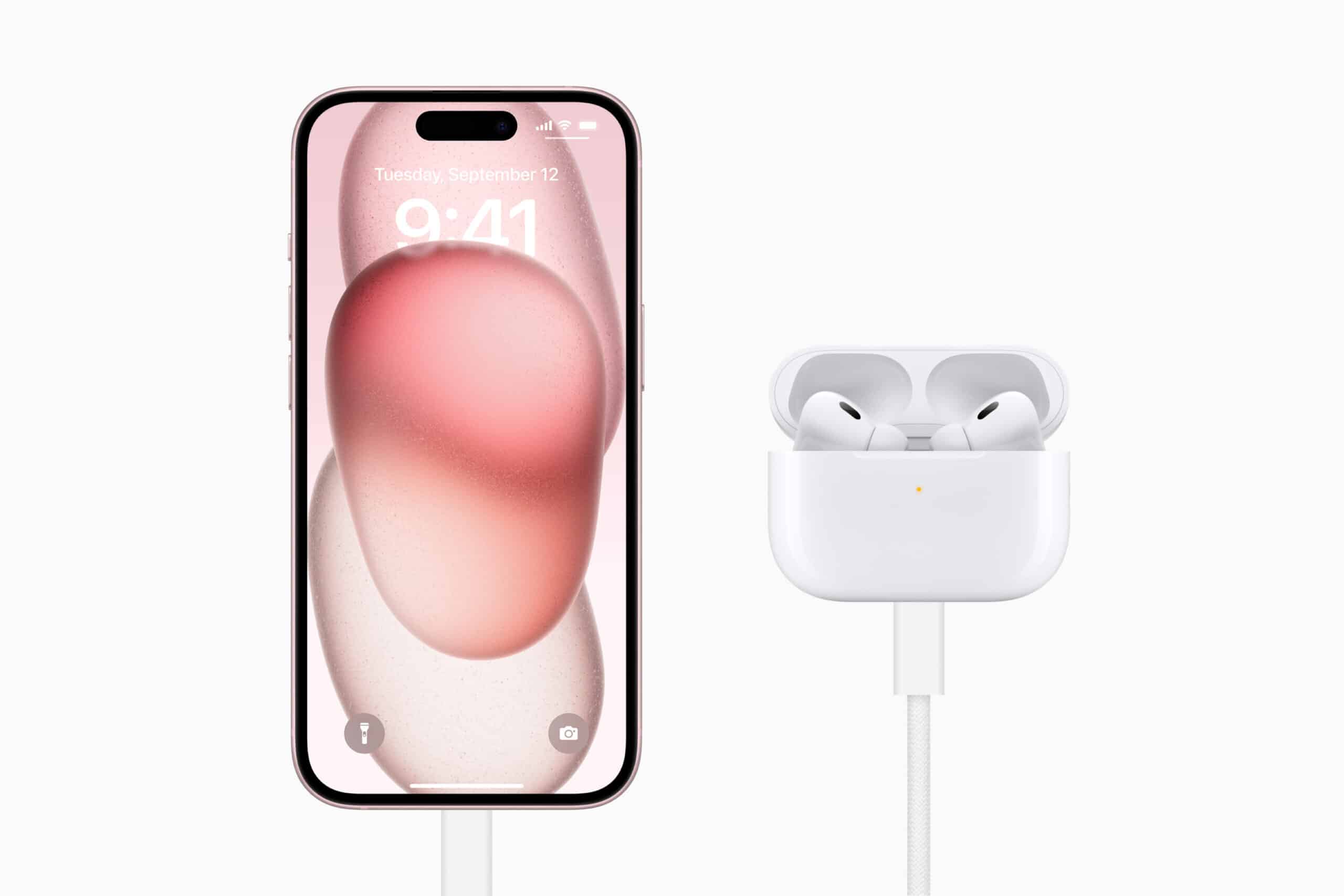
But wait, you might be wondering. What about AirPods? Those don’t charge via USB-C. Well, alongside the iPhone 15 introduction, Apple also announced updated USB-C EarPods and second-generation AirPods Pro with a USB-C port on the charging case.
(Of course, MagSafe is still the other available charging option on iPhone 15.)
Cameras
Apple is also bringing the 48MP main camera sensor introduced on last year’s iPhone 14 Pro models to the iPhone 15 lineup. The new main camera has a focal length of 26mm, boasts an extremely fast aperture of f1.6, 100% focus pixels, and a sensor shift on-board image stabilization system.
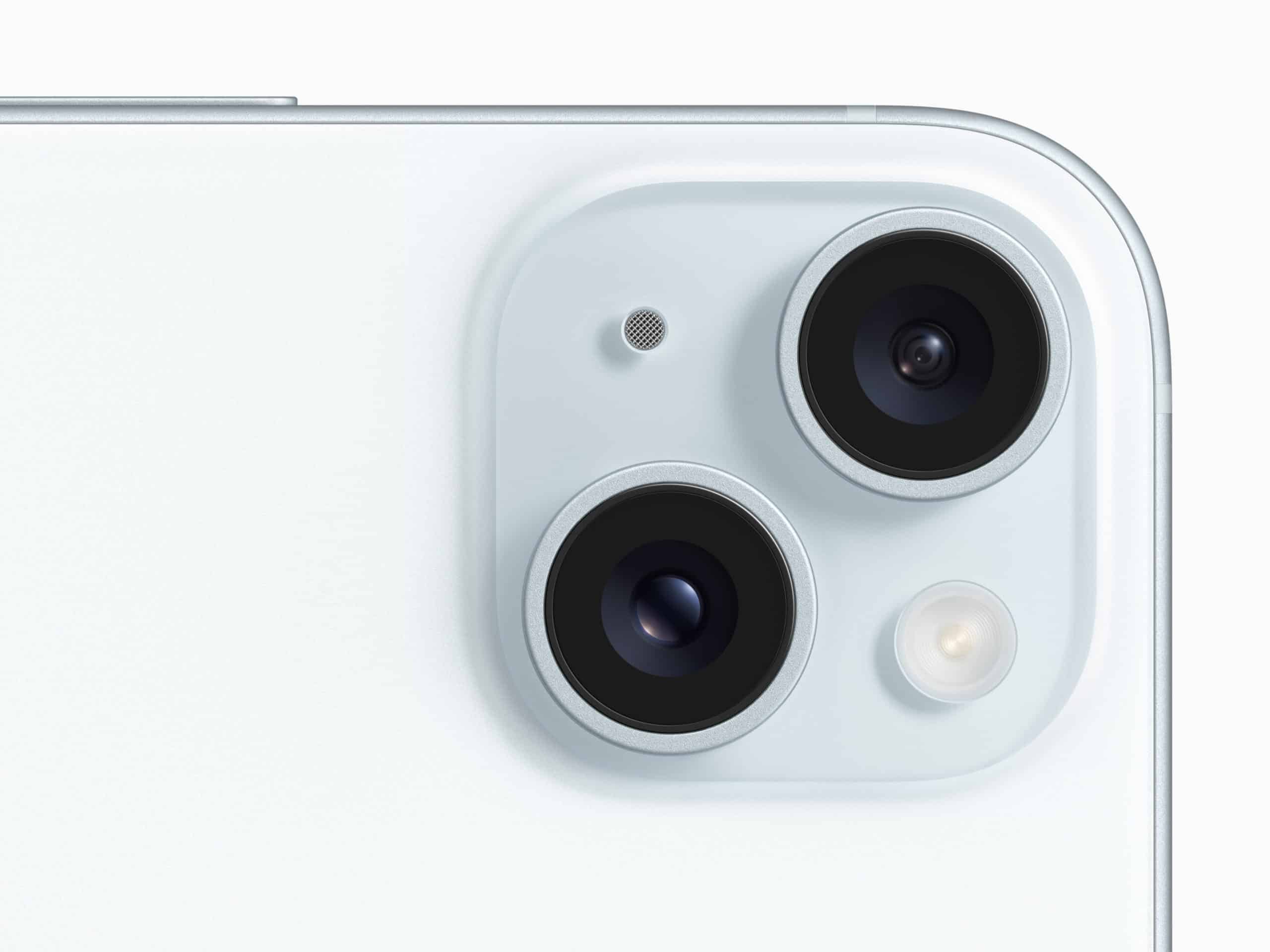
In other words, this new main camera on iPhone 15 creates photos that will have more detail, sharper focus, and much less blur caused by shaky hands or conditions. Plus, you’ll get better shots in low light conditions.
The quad-pixel main camera sensor condenses the image data captured to provides super-high-resolution 24MP photos as the default.
2x zoom
One of the things those who opt for a regular iPhone over a Pro models miss out on is that third camera lens: telephoto. For years, the telephoto lens was 2x, until the iPhone 13 Pro was released with a 3x zoom.
But Apple is using this big new 48MP sensor to give iPhone 15 users their 2x zoom back.
The new 2x mode on iPhone 15 does uses computational photography to crop into the center of the 48MP sensor to create 2x zoom shots. The resulting photos are 12MP but are optically equivalent to a 2x shot.
New and improved portraits
Another nice update to the iPhone 15 are the improvements to portraits. Apple says portraits taken with iPhone 15 are now sharper and feature more vivid colors. Performance in low light has improved as well.

Plus, you can now take portraits without having to switch the camera app into Portrait mode. The updated camera app will automatically recognize, people, dogs, or cats when they enter the frame or when you tap to focus. After you’ve taken the shot, you can go into the Photos app and you’ll be able to convert images taken outside of Portrait mode using the automatically captured depth data.
This also means that you can shift focus after a photo is taken as well. During the keynote, Apple showed a demo of a photo being edited in the Photos app. Shifting focus is as easy as tapping a different subject in the image.
Connectivity
Find My improvements
Just as the company did with Apple Watch Series 9, Apple is bringing a new ultra wideband (UWB) chip to the iPhone 15.
The new chip makes it possible for two iPhones with the chip to connect to one another at 3x the distance than what the iPhone 14 was capable of. Using this new chip, Apple has introduced a new feature to the Find My app: precise location for friends and family.

The feature works the same as precise location for AirTags. Let’s say you’re at the supermarket and unsure where a family member has wondered off to. From the Find My app you’ll tap the person and the app will give you directions on how to find them and how far away they are. Because this new feature requires the new chip, it’s for iPhone 15 users only.
Satellite Roadside Assistance
Building on the Crash Detection and Emergency SOS satellite safety features introduced on last year’s iPhone 14 models, Apple introduced Roadside Assistance via Satellite with the iPhone 15.
When an iPhone 15 user has car trouble and cellular or Wi-Fi is not available, the new feature will connect them to AAA roadside assistance in the U.S. via satellite. An interface pops up with a short questionnaire before passing the collected details on to AAA.
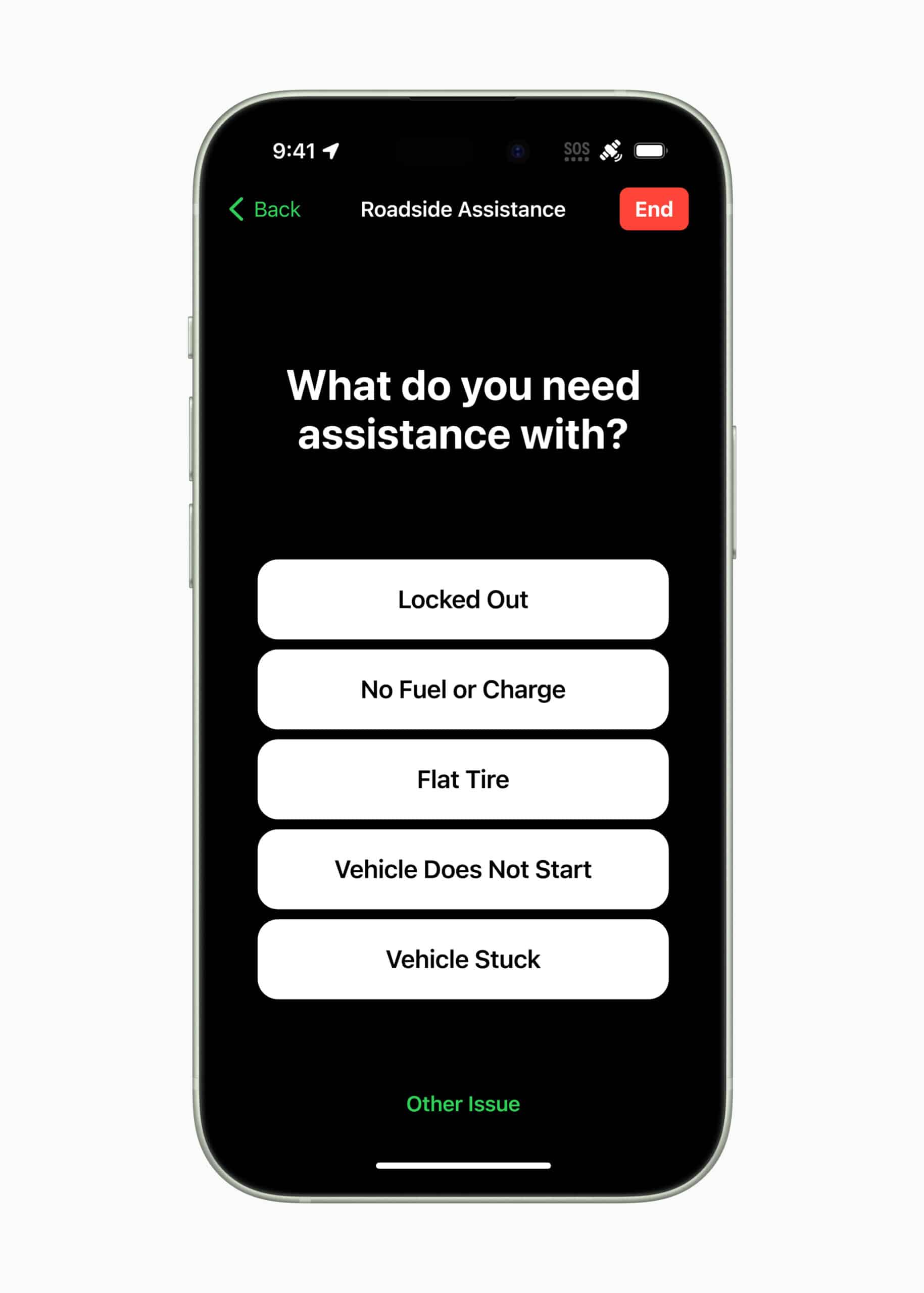
Following this initial communication, AAA can follow up through text messages via satellite and dispatch help to the user’s exact location. Access to the feature in included free with iPhone 15 purchases for two years.
Availability
The iPhone 15 will be available in two models: the 6.-inch iPhone 15 and 6.7-inch iPhone 15 Plus. The iPhone 15 starts at $799 while the iPhone 15 Plus starts at $899. Pre-orders will start Friday, September 12 while shipments and in-store availability will begin September 22.

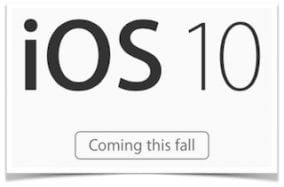

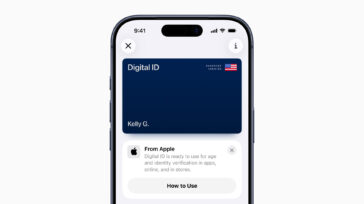
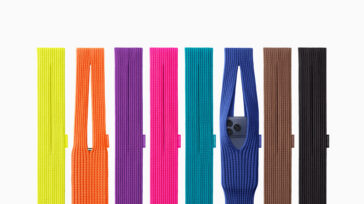
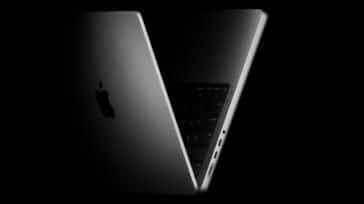
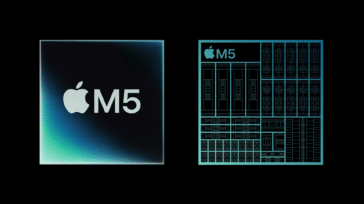


Has anyone addressed how the new iPhone will play with hi-definition music apps, that required the Apple Lightning to USB adapter (for connection to external dacs or Audioquest Firefles). Will standard USB-C to USB A adapters accomplish the same connection?